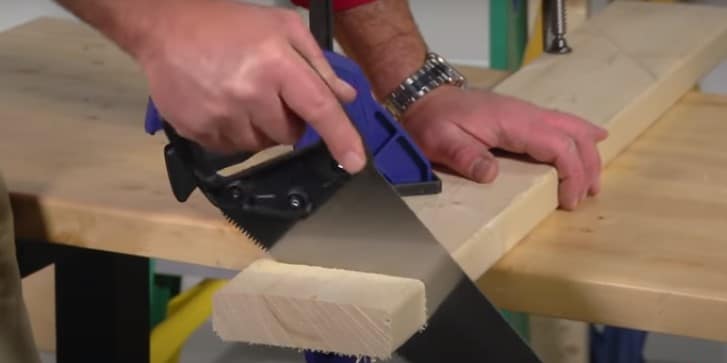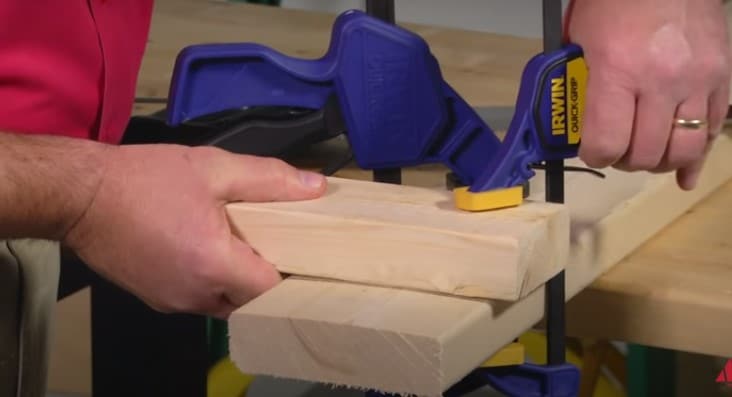
How to cut wood with a saw?
At some point in our lives even if we’re not a woodworker, contractor, or an avid DIYer we have had the chance to cut some wood. And, as always, the first thing that we think of and grab by our toolshed is the tried and tested saw.
So, it is only important to know how to cut wood with a saw. As we all know, there are multiple types of saw and we somehow need to familiarize ourselves with a few of them so we know our way around these useful tools.
This article will serve as a guide for beginners and a refresher for some. Read on!
The rule of thumb
There are a few things that you need to consider before you go into cutting wood with a saw, the type of wood that you’re about to cut and the type of saw that you need to utilize for effectively doing so.
Types of saw
As mentioned, there are a few types of saw and we will discuss some common ones that you may utilize if you’re planning to cut some wood.
Traditional Handsaw

It’s not crazy to actually say probably 9 times out of 10, a household would have a traditional handsaw readily available for use. It’s just a tool so common because of how easy it is to use and at the same time its versatility.
So every woodworker would most definitely have a handsaw at their disposal. Obviously, one of the best ways if not the best methods to cut wood is by using a handsaw.
Most of the cuts that you’re probably going to do can be done with it. It’s not every day that we really need to fell a large tree, right? So yes, knowing how to cut wood using a handsaw is a must!
A handsaw is characterized by a super-sturdy handle and large blade. And, as you might have guessed the handsaw employs different types of blades for different types of applications.
Wielding a handsaw properly can be very beneficial and while it may look easy for seasoned woodworkers, you need to get the hang of it to truly maximize it and take note, that it is completely muscle powered.
A handsaw is best if you need to cut wood by hand. And its blades come with varying TPI or teeth per inch based on what they are for.
For example, if you need to rip through wood then go with a rip saw with 5 TPI. If you need to cut across the grain of wood then a crosscut saw is idealfor it’s got shorter teeth thana rip saw but has got 10 to 12 TPI.
A handsaw with about 6 to 8 TPI is considered a hybrid dual cut saw meant for both applications mentioned above.
Easy steps to remember when cutting wood with a handsaw
- Make sure to secure the wood on your sawhorse or workbench
- Make sure to mark your cut with a line
- Place the handsaw slightly away from the cut line on top of the wood about 1 to 2mm to ensure that your cut won’t be too long or too short
- Grip your handle firmly but also relaxed
- Make sure to hold the wood down in place with your other free hand
- Your first cut should have no pressure on the saw and then pull back and slowly apply the needed pressure
- Continue until the wood breaks off

Easy, right? Now on to the next type of saw.
Jigsaw
A jigsaw is a DIYer’s delight for it is one functional and versatile tool that can make a lot of cuts. Jigsaws are great at cutting straight lines as much as the circular saw but they are also used to cut curves with utmost precision.
A jigsaw is one of the safest power saws and its shoe rests upon the material that you are about to cut and offers protection to the blade. It is adjustable and can cut any angle that you need ti to. You put a blade o it with 8 to 10 TPI and you’re on your way to cut wood like a pro.
A jigsaw does have an upward pointing blade so it cuts upwards or with an upstroke but you may use a reverse blade with it for downstroke cutting.
Though probably meant for pros or expert DIY woodworkers, with a jigsaw you can cut curves on wood with ease and added efficiency.
Circular saw
A circular saw is one of the most popular types of saw today and for a lot of good reasons. Aside from wood, it can cut through a lot of materials or projects like wall studs, rafters, joists, and sheathing.
It’s also quite safe and easy to operate too once you get the hang of it. Circular saws are utilized to cut through plywood and lumber among others but also non-wood materials such as rigid foam board and yes, concrete.
Electric or battery powered saws are heavy-duty and convenient and are essential for we can’t do everything by the muscled-powered handsaw only, right?
Circular saws are suitable for framing and popular on jobsites and substitute the handsaw. As you might already know, circular saws can be fitted with multiple types of blades and in our case, you should be using a wood blade.
A 4-inch wood blade is enough for light wood cuts but you’d need something as large as 12 inches for timber.
Some tips? Make sure to make your marks and support your piece of wood. Don’t go in too deep with your cut and start them straight. Take note, that with a circular saw you may also do plunge cuts, and using an offset block or rip fence should make things easier and more accurate.
Miter saw
Another type of power saw typically use for cutting wood is the miter saw. They are suitable for making crosscuts on framing, molding installation, or for siding strips.
It’s got a base that can be mounted on workshops that makes them very stable. Then it’s got a fence or a steel guide for your cutting material, and the blade is housed on a large disk with an adjustable arm that can be adjusted up and down or side to side accommodating any cut you will have to do.
They are perfect for, as mentioned, framing and at the same time to finish carpentry for you can make simple to complex cuts with a miter saw.
Chainsaw
All right, we’ve discussed some saws used for DIY projects and other woodworking tasks and now let’s discuss the heavy-duty ones starting with a chainsaw.
You’re probably familiar with a chainsaw as it is commonly used for cutting down timber. They are used to feel trees and cutting tree limbs. They also come in all shapes and sizes from 14 inches for light cutting or pruning to 36 inches used by lumberjacks.
DIYers can make do for 20-inch chainsaws. Chainsaws come either corded or cordless. Fuel-operated or electric. So go with the type that best suits your needs.
Aside from chainsaws, it is also worth noting that there are other types of power saws used for heavy-duty wood cutting. We have the manual two-man crosscut saw and the precise bandsaw.
Though hacksaws are mostly used to cut metal pipes or PVC, they can sometimes also be utilized for cutting wood if you don’t have a traditional handsaw handy at the moment. You may also use a saber or reciprocating saw if that’s more appropriate for the application.

Safety Precautions
As always, we need to follow safety precautions no matter what type of saw it is that you are using to cut wood. Here are a few things to consider.
- First of all, make sure that you wear appropriate safety gear. Wear eye protection for dust or any other particles that will fly around once you start sawing. Wear a dust mask so you won’t inhale any sawdust. And also, wear earplugs for these power saws can oftentimes get too loud and damage your hearing.
- And just to reiterate, make sure to support your wood material right. Put it on stable support or maybe clamp them for in some instances, you’d need both hands to operate the saw. Holding the material, on one hand,ain’t’ very advisable. Your wood material can’t wobble.
- Always remember to not wear any jewelry and wear tight clothing when operating these tools.
- Make sure to always clear your surroundings from unnecessary clutter that might put you at risk of tripping or falling. You don’t want to trip while holding one of these saws.
- And lastly, make sure to always keep your saws in tip-top shapes. Make sure that blades are sharp for dull ones can cause a lot of trouble or injuries. And if you’re operating a power saw, make sure that it is turned off and unplugged from the power source before changing the blade.
There you have it, these are our tips on how to cut wood and we hope that you’ve learned a thing or two from the article. We sure enjoyed preparing it for you so go work on that project and STAY SAFE!
Leave a Reply